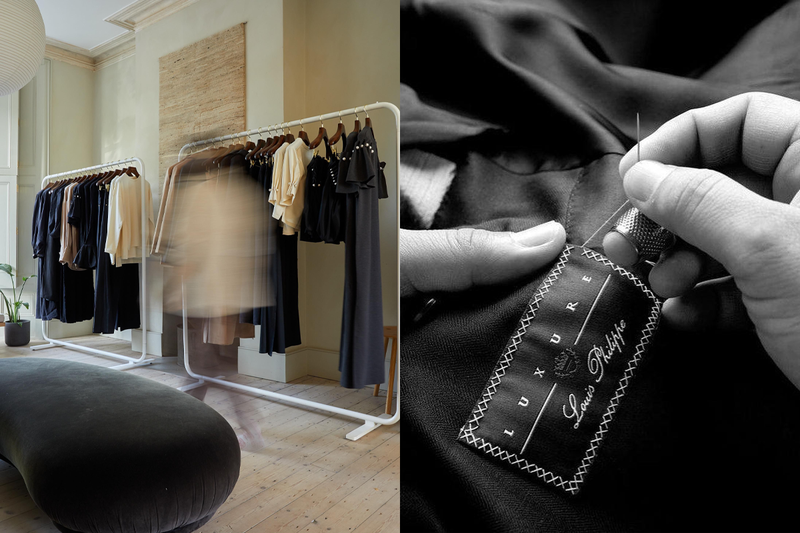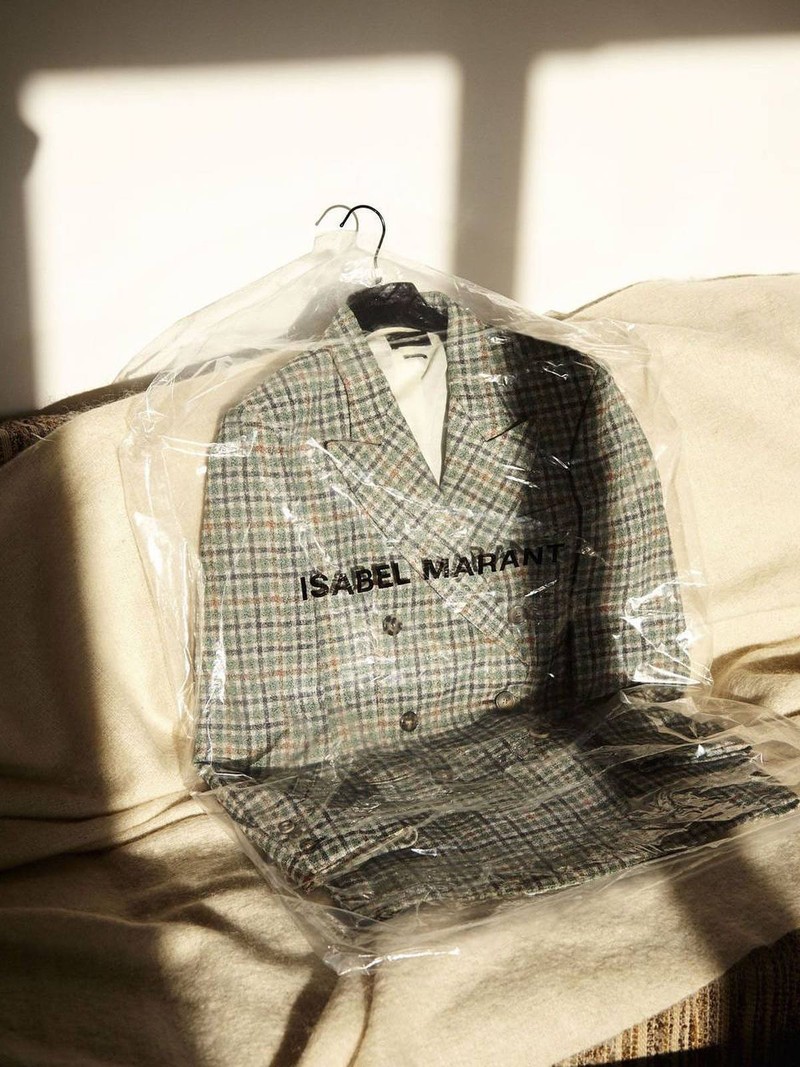12 Ways To Shop More Sustainably
Familiarise Yourself With The Terminology
“Words such as ‘organic’, ‘natural’ and ‘socially responsible’ are all key. Also keep an eye out for ‘regenerative natural fibres’ and certifications such as GOTS cotton or RWS wool. You need to be careful about recycled fibres. Recycled synthetic fibres are being pushed as a circular solution at the moment, but there is no global system in place for these polyester garments to actually be recycled. Without that, polyester takes hundreds of years to degrade and therefore isn't technically a positive sustainable choice.” – Amy Powney, creative director, Mother Of Pearl
Opt For Natural Fibres
“Synthetic fabrics such as polyester and nylon are major contributors to microplastic pollution. I highly recommend choosing clothes made from natural fibres like organic cotton, linen, hemp or bamboo. These materials are not only eco-friendly but also feel great against your skin. Plus, they tend to be more breathable.” – Piotr Krzymowski, co-founder, Loop Generation
Look Out For TENCEL
“TENCEL is a branded lyocell of botanic origin (it comes from trees). It’s compostable, biodegradable and super soft. I don't think many people understand that the viscose in their clothes is also a source of deforestation. TENCEL, however, ensures that the fibres are instead from responsibly grown wood and produced in a closed-loop process.” – Amy
Choose Chemical-Free Alternatives
“This change ensures a positive environmental impact but also a social impact too, as these materials are less harmful to both the earth and the workers making the clothes. Opt for organic cotton over conventional cotton – or better yet, regenerative cotton, which is better for soil health, climate change and carbon capture. Also look for lyocell instead of viscose as this uses fewer harsh chemicals and has sustainable forestry certifications. RWS wool is better than conventional wool as it’s mulesing free and therefore more animal friendly. Finally, undyed fabrics are better than dyed fabrics since they involve fewer chemicals.” – Amy

Swap & Share
“We all know how significant accessories can be for updating outfits. Rather than buying new accessories for every occasion, consider swapping with friends or exploring rental services instead. This way, you get to enjoy the thrill of new accessories and have fun with your style – all without the guilt of adding more clutter to your wardrobe or over-consuming.” – Piotr
Wash Less
“The first step to caring for your clothes is washing less frequently. You can often wear items multiple times before washing. We always suggest that our customers use cold or cooler temperatures where possible. Avoid the tumble dryer and air dry instead. All of the above will reduce energy use and help prolong the lifespan of your clothes.” – Jody Plows, CEO, Nobody’s Child
Learn To Sew
“We all have a few garments in our closets that need a little TLC. Instead of tossing them aside, why not give them a second chance? By learning how to sew, you can repair small damages, alter the fit, or even transform old clothes into entirely new creations. There's something truly satisfying about giving a beloved item a new lease on life with just a few stitches.” – Piotr
Do A Wardrobe Audit
“When it's quiet in January, it’s a great time to do a wardrobe detox and audit. Take out all of your clothes and make four piles: one for the current season you're in, so that everything you see is appropriate and ready to wear; a second pile for donations; a third for repairs and alterations; and a fourth for the clothes that can't be donated or fixed. It's that fourth pile we really need to interrogate. Check which brands and materials keep recurring. This is so essential because this is the basis of your personal filter: identifying the fabrics and the retailers that really don't serve you.” – Andrea Cheong, author of Why Don’t I Have Anything To Wear?
“Once you’ve had a wardrobe detox and only own pieces you really love, shopping your own wardrobe is a great practice to adopt. It saves time and resources spent buying new items and allows you to reconnect with the pieces you love and already own.” – Tanya Mulesa, co-founder, CICON app
Decide What To Rent Out, Sell Or Repair
“Donating pieces isn't the only option for pieces you no longer want. Post-detox you can figure out if there are any items you want to rent out, sell or repair. If you’re not ready to let something go but don’t wear it often, it could be a great contender for rental. If you’ve finished with it, decide whether you’d prefer to donate or resell it. Anything that’s been well worn or can’t be resold goes in the recycle box.” – Tanya
Set Your Sustainability Goals
“This is key. For instance, if your goal is to pursue a zero-waste approach, focus on second-hand shopping only. If you want your clothes to reflect your sustainable values more, look to invest in independent designers. If your goal is to buy less but better, challenge yourself to only shop for natural fibres in your everyday clothing and to inspect the quality of items thoroughly.” – Andrea
Be More Critical Of Your Consumption
“When people say they have nothing to wear, I’ve found there are five main reasons why: organisational issues; the frustration that mainstream fashion doesn't serve their physical needs; a huge lifestyle change; simply not knowing how to shop for quality; and needing to learn how to shop mindfully. There are various solutions and no one size fits all, but it helps to first consider which one of these categories you fall into and go from there.” – Andrea
Change Your Mindset
“Consider the idea that you're not what you wear. Labels can be a fantastic marker of non-verbal communication, but ultimately we shouldn’t let them govern our identity. Learning to stop relying on labels and instead focusing on sustainable buys over sustainable brands is crucial.” – Andrea
DISCLAIMER: We endeavour to always credit the correct original source of every image we use. If you think a credit may be incorrect, please contact us at info@sheerluxe.com.


